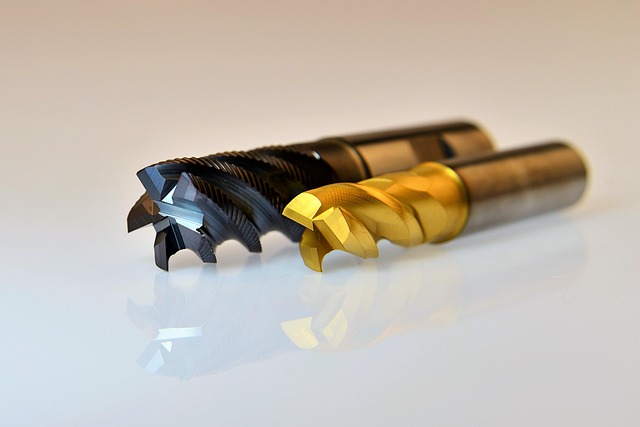Building Information Modeling (BIM) is transforming the construction industry by creating digital 3D models that integrate all project data, enhancing collaboration among stakeholders. In structural metal detailing, BIM ensures precision and efficiency through detailed planning, visualization, and early conflict detection, reducing errors and delays. Integrating sheet metal components into BIM platforms revolutionizes project management, fostering seamless communication and coordination for complex structures. Best practices include centralized model management and regular coordination meetings to boost efficiency, accuracy, and project success in intricate structural metal detailing.
In today’s construction industry, Building Information Modeling (BIM) is transforming project coordination. This article delves into the innovative application of BIM-integrated sheet metal modeling, enhancing structural metal detailing and overall efficiency. We explore how this integration revolutionizes project workflows, from design to execution, promoting seamless collaboration among stakeholders. Understanding BIM’s impact on construction projects and leveraging sheet metal modeling within this framework offers significant benefits, including improved accuracy, reduced errors, and streamlined communication.
Understanding BIM and Its Impact on Construction Projects
Building Information Modeling (BIM) is transforming the construction industry by creating a digital representation of a building or infrastructure project. This innovative process goes beyond traditional 2D drawings, offering a comprehensive, three-dimensional model that includes all project data and information. BIM enables better visualization, coordination, and collaboration among various stakeholders, from architects and engineers to contractors and owners.
In the context of structural metal detailing, BIM plays a pivotal role in ensuring precision and efficiency. By integrating sheet metal modeling into the BIM environment, construction teams can seamlessly coordinate complex structural components. This digital approach allows for detailed planning, visualization of intricate metal structures, and early conflict detection. With BIM, project coordination becomes more streamlined, reducing errors, minimizing delays, and ultimately contributing to the successful delivery of high-quality construction projects.
The Role of Sheet Metal Modeling in Structural Detailing
In the realm of construction and architectural design, structural metal detailing plays a pivotal role in bringing buildings to life. Sheet metal modeling, as an integral part of this process, involves creating precise 3D representations of metal components such as panels, roofs, and fascias. This advanced technique goes beyond traditional 2D drawings, offering a comprehensive view of the project’s structural elements. By utilizing BIM (Building Information Modeling) integration, sheet metal modeling becomes a powerful tool for enhancing collaboration and coordination among various project stakeholders.
With BIM-integrated sheet metal modeling, architects, engineers, and contractors can seamlessly work together on a unified digital model. This allows for real-time visualization and analysis of structural metal detailing, identifying potential conflicts or issues early in the design phase. The process streamlines communication, reduces errors, and ensures that the final construction aligns perfectly with the design intent, resulting in efficient project execution and a more robust building structure.
Integrating Sheet Metal with BIM for Enhanced Coordination
Integrating sheet metal components into Building Information Modeling (BIM) platforms is a game-changer for construction projects, especially when it comes to structural metal detailing. This innovative approach allows for seamless coordination and collaboration among various project stakeholders. By incorporating structural metal detailing into BIM models, architects, engineers, and contractors can visualize and interact with the design in a 3D environment, ensuring better alignment between different building systems.
This synchronization is particularly beneficial during the design and construction phases. BIM enables users to detect potential conflicts or interferences early on, such as clashes between metal structures and other building elements. This proactive approach reduces errors, streamlines construction processes, and promotes efficient use of resources. Moreover, it enhances communication among team members, ensuring everyone works from the same, up-to-date model, which is crucial for complex projects where coordination is paramount.
Benefits and Best Practices for Seamless Project Execution
BIM-integrated sheet metal modeling offers numerous benefits for seamless project coordination, especially in the realm of structural metal detailing. By integrating 3D models into Building Information Modeling (BIM) platforms, design teams can collaborate more effectively, identifying and resolving conflicts early in the project lifecycle. This ensures that all team members work with accurate, up-to-date information, streamlining communication and reducing errors. The digital nature of BIM also facilitates easy modifications, allowing for quick adjustments to structural metal detailing without disrupting other aspects of the project.
Best practices for seamless project execution include maintaining a centralized model accessible to all stakeholders, establishing clear roles and responsibilities, and implementing rigorous quality control measures. Regular coordination meetings and reviews help in catching potential clashes between structural metal components and other building systems early on. Furthermore, utilizing advanced modeling software equipped with clash detection tools can significantly enhance the process. By adopting these practices, BIM-integrated sheet metal modeling becomes a powerful tool for achieving project efficiency, accuracy, and overall success.
BIM-integrated sheet metal modeling emerges as a game-changer in construction, seamlessly bridging the gap between design and fabrication. By integrating structural metal detailing into BIM processes, projects benefit from improved coordination, reduced errors, and enhanced efficiency. This approach not only streamlines project execution but also ensures that every aspect of the build is meticulously planned and executed, leading to better outcomes for all stakeholders involved in complex construction endeavors.
